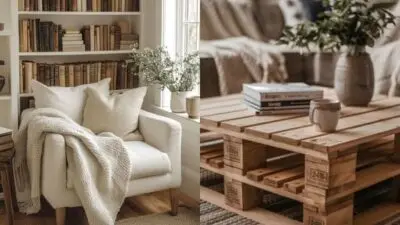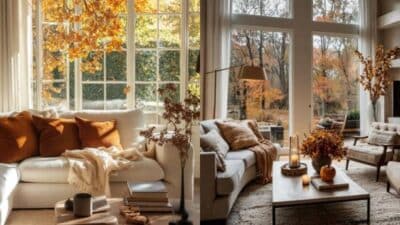Creating a unique atmosphere in a home often starts with the walls. DIY wall design ideas offer an easy way to refresh any space while allowing for personal expression. With simple materials and some creativity, anyone can transform plain walls into stunning focal points.
From choosing bold colors to exploring various textures, there are countless ways to enhance a room’s aesthetic. Engaging in a DIY project not only beautifies the environment but also provides a fulfilling creative outlet.
1) Create a Yarn Wall Hanging with Driftwood



Creating a yarn wall hanging with driftwood adds a boho touch to any space. It combines natural elements and colorful yarn for a unique piece of art.
Begin by gathering materials. A piece of driftwood or a sturdy branch will serve as the base. Several skeins of yarn in your chosen colors are necessary, along with scissors.
Next, cut lengths of yarn. Each piece should be roughly four feet long. The number of strands depends on how full the hanging should look.
Tie the yarn to the driftwood. Use a simple knot to secure each strand tightly. Feel free to mix colors for a vibrant design.
Once all strands are attached, trim them to the desired length. This step allows for various shapes, from layered to graduated styles.
Hanging the finished piece is easy. Use a hook or nail to display it on a wall, creating a cozy, inviting atmosphere. This DIY project is not only fun but also a wonderful way to personalize a space.
2) Design a Textured Wall with DIY Spackle Art



Creating a textured wall with spackle is an affordable and fun project. It allows for personal expression while adding depth to any room.
To begin, gather the necessary materials. This includes a canvas, painter’s tape, spackle, and a putty knife.
Start by preparing the canvas. Apply painter’s tape along the edges to keep the design clean. This will prevent spackle from smudging onto undesired areas.
Next, use the putty knife to spread the spackle onto the canvas. Experiment with different techniques to create various textures.
Once finished, let the spackle dry completely. This usually takes a few hours. After it dries, the textured art can be painted or left as is to highlight the textures.
This DIY project not only beautifies a space but also showcases creativity. It’s perfect for those looking to add a unique touch to their walls.
3) Craft a Gallery Wall from Book Pages


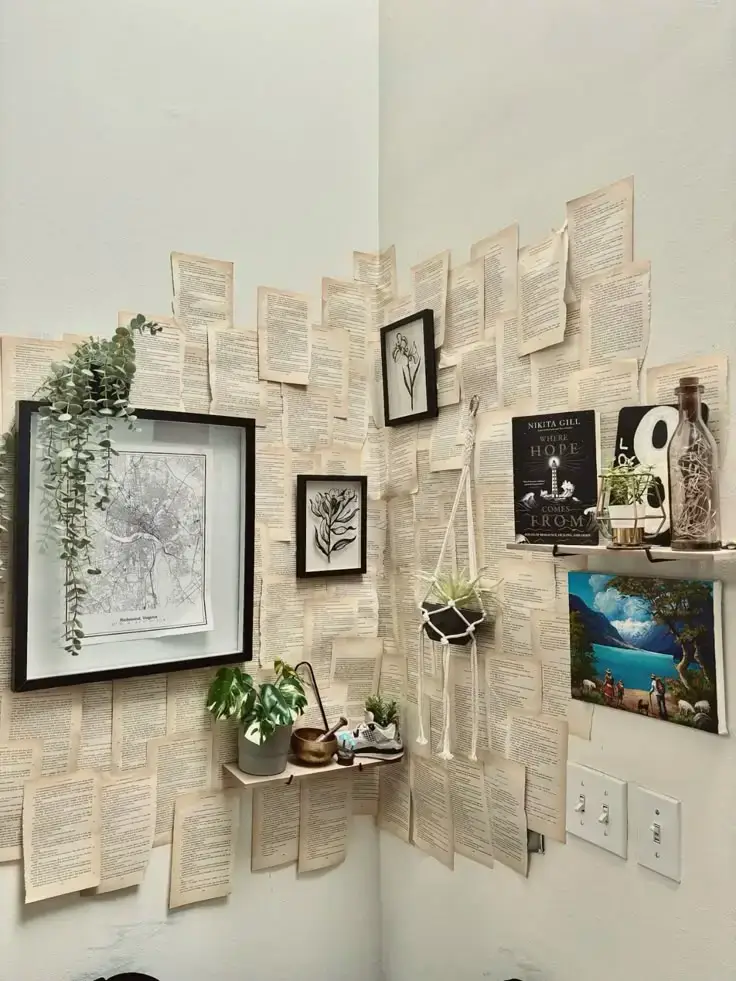
Creating a gallery wall from book pages can add a unique touch to any room. It’s a thoughtful way to repurpose old books and showcase personal style.
To get started, gather materials such as vintage books, glue sticks, and a base like hardboard. A craft knife or jigsaw will help cut the pages to the desired size.
They can choose a color scheme or theme to make the display cohesive. Arranging the pages in an interesting pattern will create visual appeal.
Once arranged, attaching the pages is simple. Using glue or panel pins ensures they stay in place. This method allows for creativity and personalization, making it a fun project.
Incorporating frames or other decorative elements can enhance the look. Adding plants or photos might complement the book pages and provide more depth to the gallery wall.
4) Use Washi Tape to Form Geometric Patterns


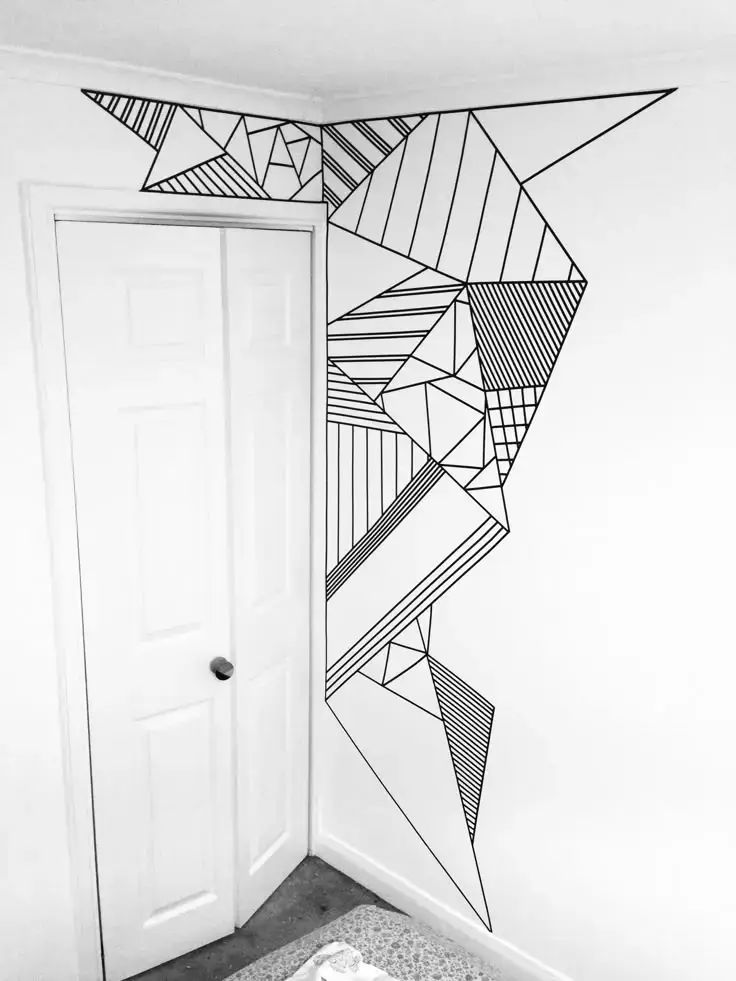
Using washi tape is a fun and creative way to add geometric patterns to walls. This method offers flexibility and allows for unique designs without the commitment of paint.
She can start by selecting various colors and patterns of washi tape. Cutting the tape into different lengths creates dynamic shapes, such as triangles or diamonds.
Applying the tape directly to the wall can transform a simple space into a visually appealing area. The removable nature of washi tape makes it easy to change designs whenever desired.
For a modern look, a herringbone pattern works well with washi tape. This pattern can bring a stylish touch to any room, making it perfect for renters or those who often redecorate.
With washi tape, creating geometric wall art becomes a straightforward DIY project. It offers a chance to express creativity while enhancing the home environment.
5) Paint a Mural with Simple Stencil Designs



Creating a mural with stencils can be a fun and engaging project. It allows for personal expression and adds character to any room. Simple stencil designs make it easy for anyone to get started.
First, they should choose a theme or pattern that fits the space. Nature scenes, geometric shapes, or abstract designs are popular options.
Once the design is selected, preparation is key. A clean wall surface and high-quality paint will make a significant difference.
Using reusable stencils, they can layer colors to enhance the depth. This method helps achieve a polished look without needing advanced painting skills.
Finally, patience is important. Allowing each layer to dry before adding new colors ensures a clean finish. With careful planning, a stunning mural can come to life, making the space truly unique.
Understanding Color Psychology
Color psychology plays a crucial role in home design. Different colors can evoke specific emotions and behaviors, influencing how a space feels. This understanding helps in choosing colors that align with the desired atmosphere of a room.
Warm vs. Cool Colors
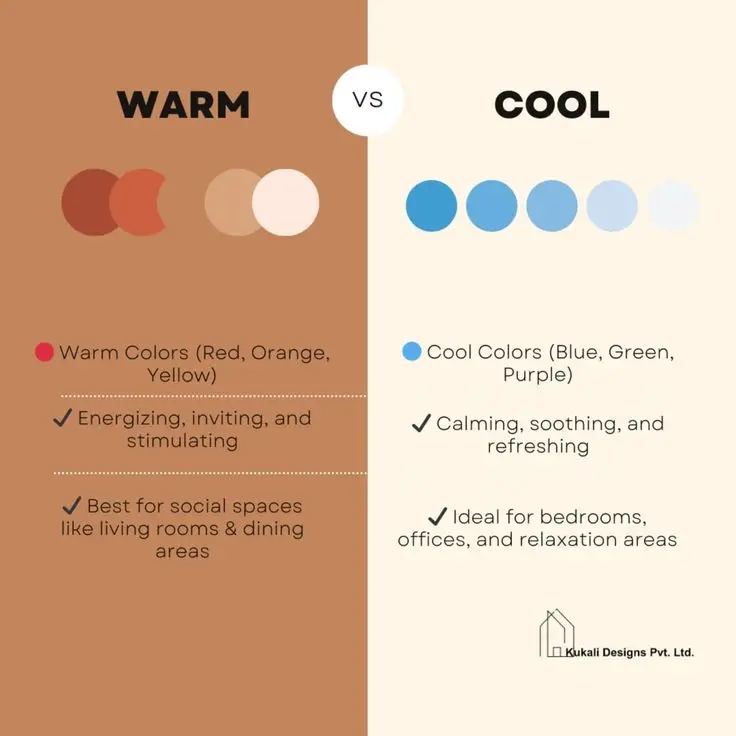
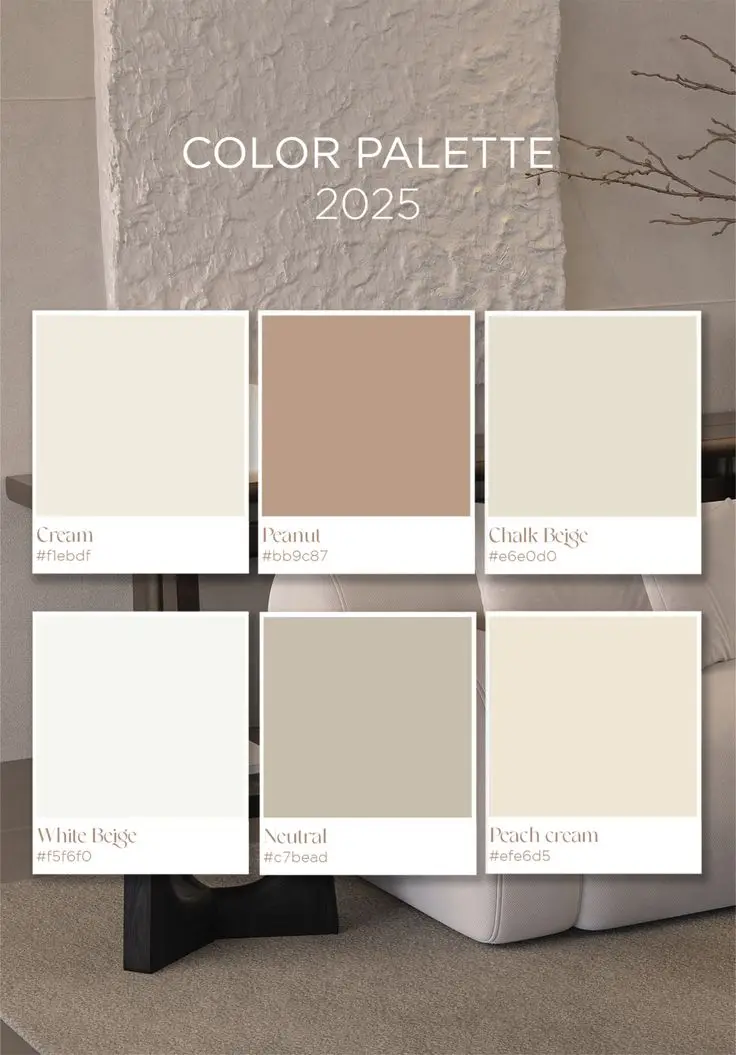
Warm colors, like red, orange, and yellow, are associated with energy and warmth. These shades can make a room feel inviting and stimulating. They work well in spaces meant for social interaction, such as living rooms and kitchens.
Cool colors, including blue, green, and purple, promote relaxation and calmness. These hues are ideal for bedrooms or areas meant for unwinding. Cool colors can create a sense of spaciousness and tranquility, enhancing the overall comfort of a room.
Using Accent Colors Effectively

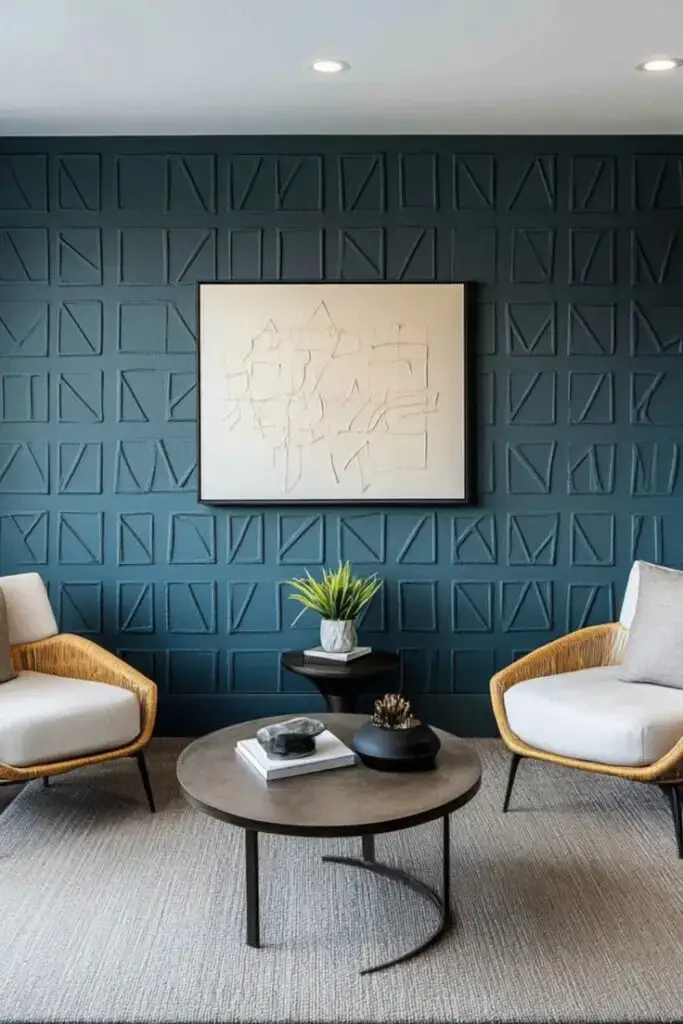
Accent colors can add vibrancy and interest to a design. They are typically bolder shades that contrast with dominant colors. The key is to use them sparingly to avoid overwhelming a space.
Choose One or Two Accents: Limit the number of accent colors to ensure cohesion.
Consider Proportion: Use accents on smaller elements like cushions or artwork.
Match with Neutral Backgrounds: Accent colors pop against neutral walls, bringing life without clashing.
By thoughtfully integrating color psychology, one can create beautifully balanced spaces that reflect the intended mood and style.
Material Selection Tips
Selecting the right materials is crucial for achieving the desired look and durability of DIY wall designs. Key factors include choosing appropriate paints and incorporating textures that enhance aesthetic appeal.
Choosing the Right Paint
When selecting paint, consider the room’s purpose and lighting. Matte paints work well in low-traffic areas due to their lack of sheen, which can hide imperfections. For high-traffic areas, eggshell or satin finishes offer better durability and washability.
It’s important to choose colors that suit the mood of the space. Lighter shades can make a room feel more open, while darker tones add depth and coziness. Testing samples on the wall helps ensure the selected colors complement existing decor and lighting.
Additionally, for an eco-friendly option, consider using low-VOC paints. This choice not only reduces harmful emissions but can also be safer for indoor air quality.
Incorporating Textures
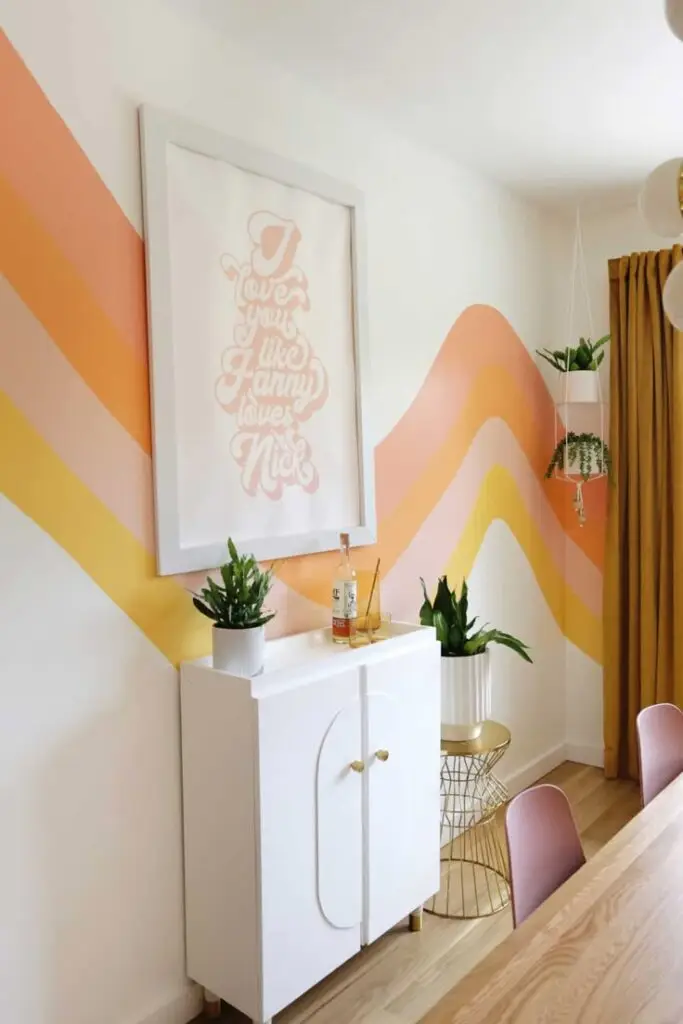
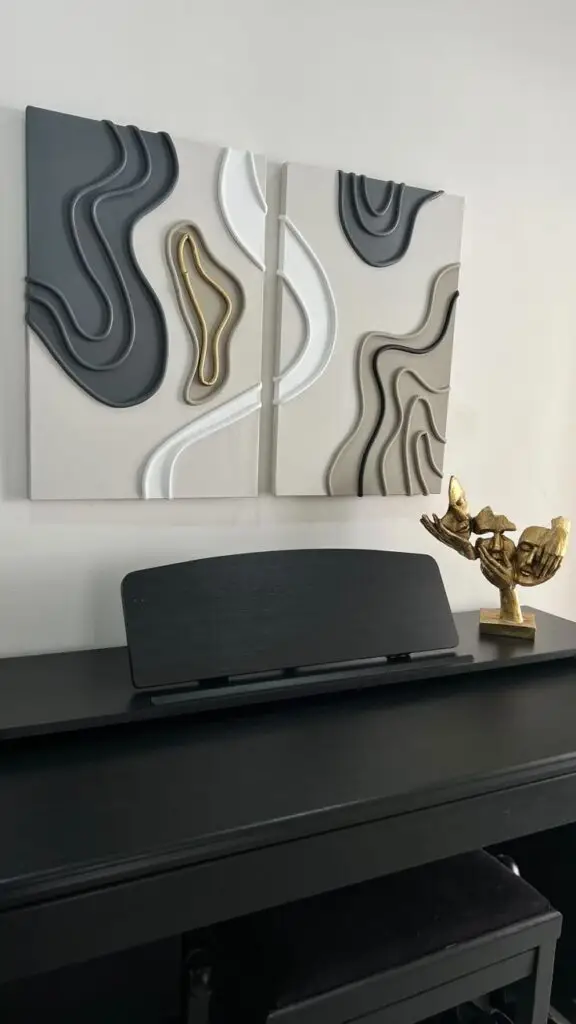
Adding textures to walls can elevate the overall design without overwhelming the space. Common options include fabric, wood, or wallpaper. Each material brings its own unique feel.
For instance, using reclaimed wood can create a rustic or modern farmhouse look. Fabric panels, on the other hand, can soften a room’s acoustics while adding warmth.
Textured wallpaper offers a myriad of patterns and can easily transform a flat surface into a focal point. It works particularly well in smaller rooms, where a bold texture can create visual interest.
Consider how these textures interact with lighting. Natural light can enhance the patterns and colors, making the design feel dynamic throughout the day.
Wall Design Mistakes to Avoid
Creating a stunning wall design requires careful consideration to avoid common pitfalls. Being mindful of patterns and lighting can significantly enhance the appeal of a space. Here are essential aspects to keep in mind.
Overcrowding with Patterns
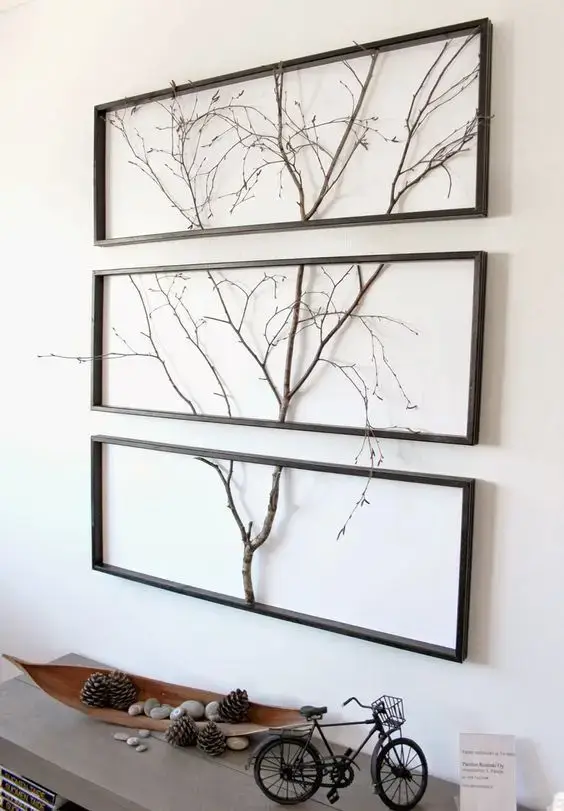

Using too many patterns can make a space feel chaotic rather than inviting. It’s important to choose a focal point and keep patterns in balance.
- Select a Dominant Pattern: Decide on one key pattern, such as floral or geometric, for a statement piece.
- Complement with Subtle Designs: Pair it with complementary, more subdued patterns to maintain visual interest without overwhelming the senses.
- Consider Scale: Mix large and small patterns. For instance, large-scale wallpaper works well with smaller decorative accessories.
Keeping a cohesive color palette will also help unite various patterns, creating a harmonious look.
Ignoring Room Lighting
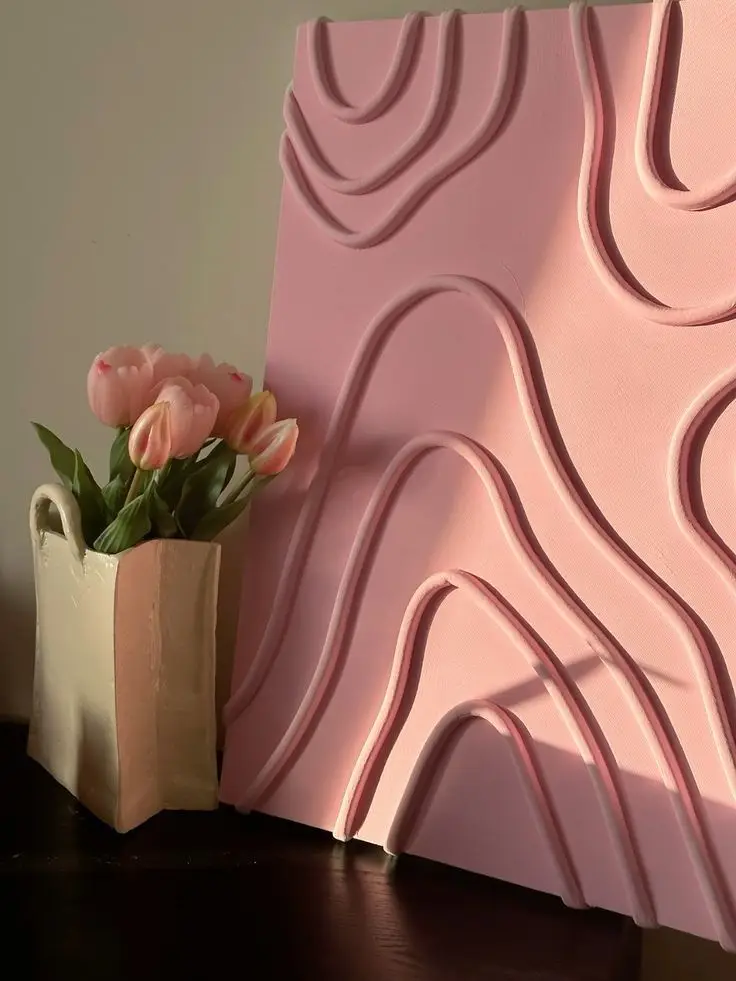
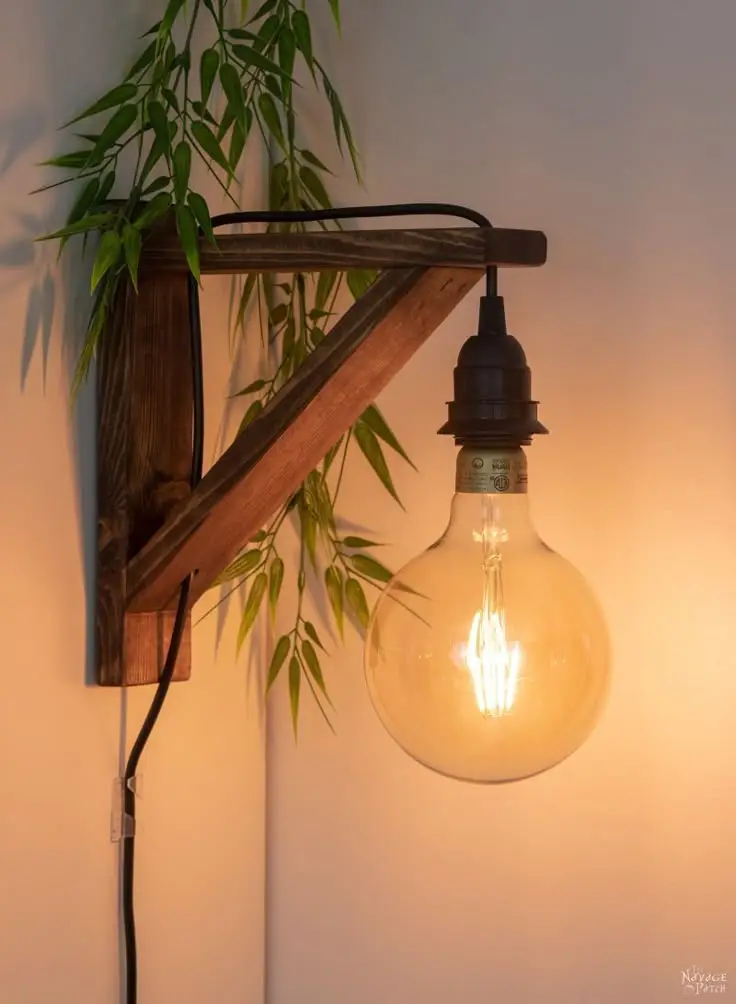
Lighting is a crucial element in wall design that is often overlooked. The way a room is lit can drastically alter how colors and patterns are perceived.
- Natural Light vs. Artificial Light: Consider how much natural light the room receives. Rooms with ample sunlight can handle darker colors, while less illuminated spaces may benefit from lighter shades.
- Layering Light Sources: Incorporate ambient, task, and accent lighting. This adds depth and enhances wall features.
- Test Paint Colors: Always sample wall paint under different lighting conditions to see how it looks throughout the day.
By paying attention to lighting, the chosen wall designs can shine in their best light.
- 0shares
- Facebook0
- Pinterest0
- Twitter0
